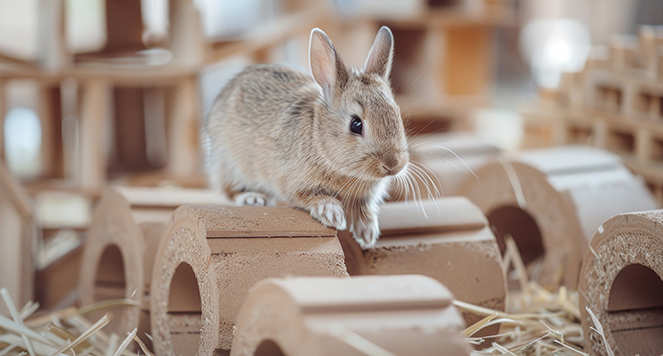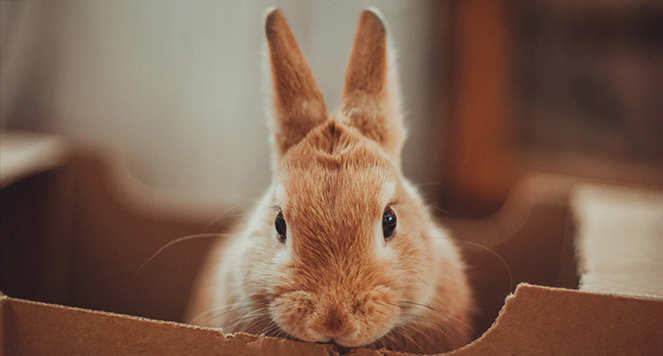
Simple Steps to Happy, Healthy Pets
Rabbits, guinea pigs, hamsters and other small animals are naturally very inquisitive and active animals. They like to keep themselves busy and, when allowed, spend the majority of their time running around investigating their surroundings. Small pets are often misunderstood, possibly because many of them are quite silent creatures and do not vocalise their requests as easily as our dogs and cats do. We often assume that they are perfectly happy in their cages, but they may have little else to do but eat and sleep. This may lead to very bored pets becoming withdrawn and depressed.
If suitable allow your pet to explore their surroundings out of the cage, or hutch. Always supervise your animals to make sure they do not escape or cause harm to themselves or their surroundings. It is important to remember that most small animals are prey species in the wild so understandably they have a dislike of wide-open spaces and when approached from above i.e. to pick them up. It induces fright and their natural instinct is to hide. Always approach your animal on the same level, crouch in front of them and let them come to you. You will also generally see that your animals will explore the edge of their run or hiding places first, rather than the middle area of a run. If you randomly place objects like tubes, tunnels, wicker baskets and boxes in their run, or area to play, you will see them investigate more of the available area and increasing their activity. Boxes, tunnels, and natural wicker baskets make ideal playthings, and they are more than happy to chew, helping keep their teeth worn down. Provide a variety of toys for your pets to play with.
Feeding time in captivity is often over in minutes whereas the wild often occupies the animals for many hours. By hiding some portions of their daily food under the boxes they will be forced to forage and look for their food, which will occupy your pet longer keeping boredom at bay. Hide the occasional treat too or you can use feeding balls that the animal has to push around, and the occasional treat will drop out, again giving your pet something fun to do.
Wild animals also have the opportunity to selectively feed on a variety of different plants and vegetation. Provide them a varied supply of fresh vegetables to encourage this. Always provide plenty of forage, such as hay and grasses, you can stuff them in the tubes or under the boxes, again making your pet work for its food and giving it some valuable exercise.
Stay in the know Related articles & advice
-
Nutrition

-
Companionship

-
Rabbits



